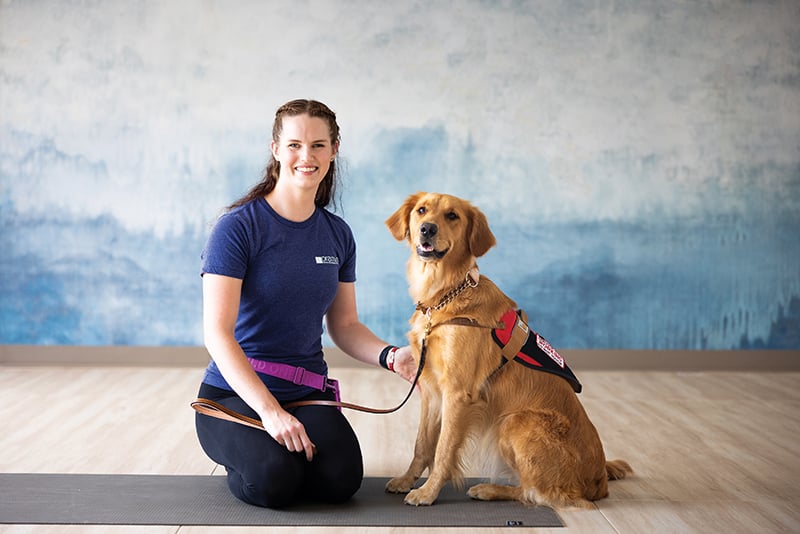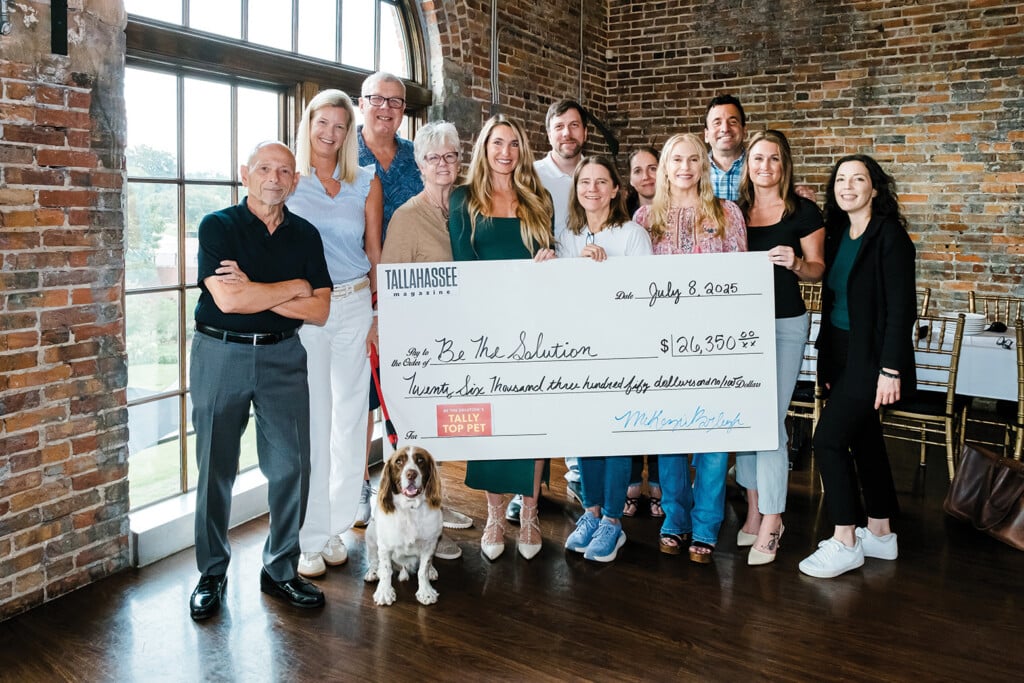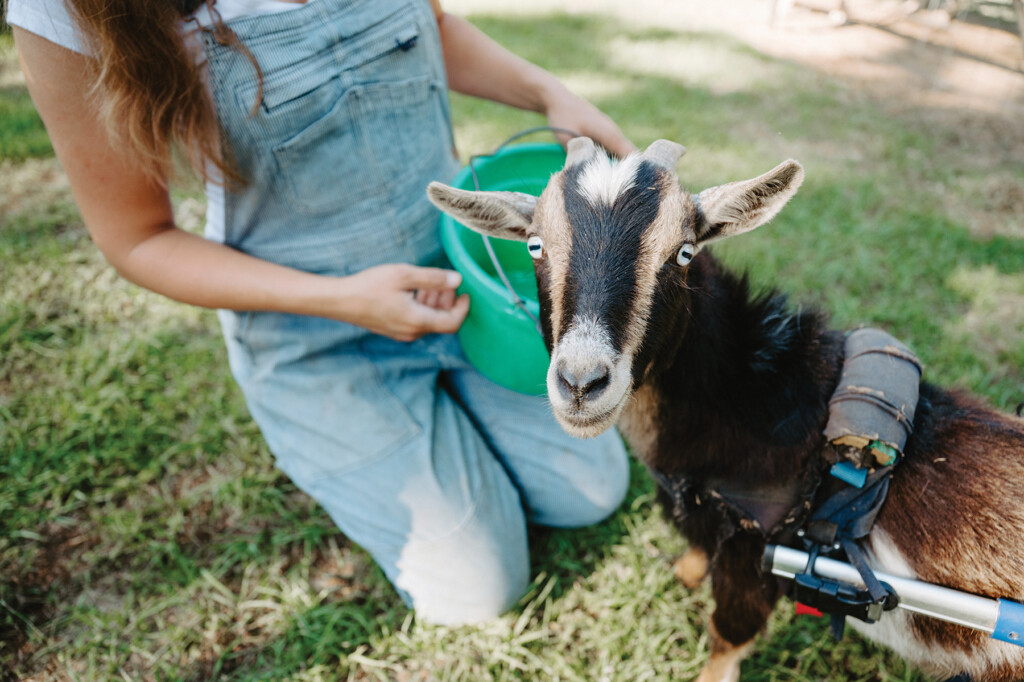A Friend in Deed
Service dog, Astrid, takes to her work as a vigilant friend

Watching Personal Trainer Kaydi Blackstock elegantly striding into Tallahassee Memorial HealthCare’s (TMH) Premier Health & Fitness Center sometimes leaves early morning exercisers staring with envy.
Blackstock confidently moves about life as if she doesn’t have a care in the world. At least, that’s how it seems if you don’t consider that the 32-year-old fitness expert has a service dog at her side.
Astrid, a nearly 2-year-old golden retriever, happily trots on her leash beside Blackstock, wearing her official service dog vest. As half a dozen clients twist, reach and quiver doing their exercises for Blackstock, Astrid lies beside the mat or machine offering benevolent doggy smiles of encouragement, but most importantly, keeping an eye on her owner.

Astrid rarely strays from Blackstock’s side. From walks around the gym to yoga class, the golden retriever is always around and ready to help. Photo by Erich Martin
For as great as having a furry companion may be, Astrid wasn’t always needed. Blackstock was born in Boise, Idaho, as one of four very athletic children who participated in track and field, basketball, softball and ballet. Her mother was a track star, and Blackstock was a high jumper herself. A career in some form of athletics seemed the perfect fit.
So, she earned a B.S. in athletic training from the University of Nevada, Las Vegas, added a teaching degree from Florida Southern College and received certifications in pilates, yoga and personal training. At one point, Blackstock was the head athletic trainer at Chiles High School. Now, she’s a cardiac rehab ambassador and personal trainer at TMH.

Although hard to resist, “cute and friendly” Astrid shouldn’t be distracted while working. Photo by Erich Martin
But a few years into her 20s, Blackstock began noticing strange feelings — dizziness, heart racing, odd blood pressure drops, vision impairment, even sudden fainting. The symptoms weren’t associated with any of the normal precipitators. There were no tumors or heart conditions, no diabetes or dehydration. Doctors offered suggestions and opinions, but no specific diagnosis could be made.
The years went by with Blackstock refusing to be sidelined by the undependability of her body while living with the constant awareness that, without warning, she might suddenly faint or feel herself unable to see.
And then, as she prepared to enter her 30s, Blackstock met Dr. Marilyn Cox, a now-retired TMH cardiologist who finally offered a name for Blackstock’s condition — dysautonomia, an illness that affects the autonomic nervous system. The systems our bodies typically “take care of” without our thinking — blood pressure, heart rate, digestion — can suddenly fail.
Blackstock’s specific form of dysautonomia is called POTS, “postural orthostatic tachycardia syndrome,” a condition affecting up to 3 million Americans.

The dependable pup is trained to stay attuned to Blackstock’s needs and is always on duty. Photo by Erich Martin
If Blackstock can recognize certain feelings, like her heart beating quickly, it may be a sign her blood pressure is about to fall. If that happens, her brain loses circulation, and she may faint. The problem is that Blackstock and others with the condition don’t always know when their blood pressure is about to drop. But there could be a way to have “an early warning system.”
“I had read about service dogs working with people with this condition. But a trained dog can cost between $20,000 to $30,000,” Blackstock said.
So she decided to “do it herself.” For $1,000, she bought a golden retriever puppy, and then, with the help of Savannah Wyckoff, a puppy trainer and friend, Blackstock began creating both a companion and her own “health assistant.”
“Today, Astrid knows 30–40 commands,” Blackstock said. “When I need stability, she will ‘brace.’ When she knows something is off through smell or my behavior, she will show me, and I can sit or lie down to avert a faint.”
Astrid can also get medicine, lay on Blackstock’s torso to increase blood pressure and is learning to call for help.

Photo by Erich Martin
“Yes, there’s been a time investment — maybe 20–30 hours a week for over a year, but obviously, it has been so very, very worth it.”
The hardest part of living life with a service dog?
“Definitely reminding people that she is working and shouldn’t be distracted. Astrid is so cute and friendly — she’s hard to resist!”


